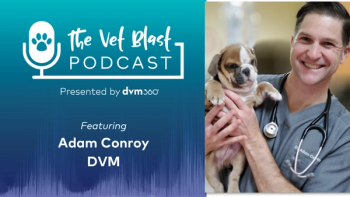
5 hands-on tips to using social media today in your veterinary practice
Practical advice and resources to jumpstart your veterinary practice journey into the new world of social media
If you're like most veterinary professionals, you're probably struggling to figure out what you need to do about social media: Will you get hopelessly behind if you don't jump into social media? Will you waste countless hours of precious time for nothing if you do?
Social media websites like YouTube, Facebook and Twitter provide new communication channels that can be useful for veterinary practices. Social media is also a rapidly evolving and fluid medium. That makes it tricky to navigate for most people. Nevertheless, social media is here to stay, and it's something that all practices should be looking into. Why? Because that's where your clients are interacting.
Think about the evolution of websites. Fifteen years ago, few companies had sites. And those that did didn't know what to do with them. That's exactly the situation we're in today with social media. The difference is that social media is evolving at an unprecedented speed. Clearly, as practitioners we must learn to use social media or risk falling behind. New developments, new options and new risks seem to crop up almost daily. Jumping in helter-skelter is not the answer. Rather, a cautious, considered approach works best. Here are some helpful tips, guidelines and recommendations to get you started:
1. Protect your reputation,
Clients are most likely to vent online about you if they feel you've dismissed their grievances, muddying your practice's good name in the process. Avoid this by taking care of clients' complaints before they leave your practice. Never let a client go home angry if you can help it.
If you spot a bad review online, contact the reviewer and offer an apology. If the review is anonymous, contact the site and see if it'll forward a message to the reviewer letting him or her know that you'd like the chance to set things right. Don't assume that you'll have to refund the client's money; often, a simple, sincere apology is all that's needed to restore the relationship. Once that's happened, ask if the client would be willing to take down the negative post. Most posters will be happy to oblige, but it may not occur to them to do it without your request.
2. Monitor the online buzz about your practice.
Social media is the largest database in the world and a free market research tool that you can tap into any time. It's also a great way to find out what your clients are talking about and what they're saying about you.
At minimum, every practice should Google the clinic's name at least weekly to see what people are saying. Alternatively, you can sign up to receive free online alerts whenever a site mentions your hospital's name. Popular alert services include Google Alerts,
Be prepared for some surprises. Online reviews are uncensored opinions, and you'll hear the good with the bad. Use the tips above to respond to the negatives, and don't forget to thank favorable reviewers for their comments. Finally, bring the online comments to staff meetings. Brainstorm ideas with your team about how to avoid problems in the future. Go beyond just fixing the negatives and identify ways to delight clients so they say wonderful things about you online.
3. Go where the people are.
Not all social media websites are created equal. If you decide to test the social media waters, focus on one of the big four social media websites: Facebook, YouTube, Twitter and LinkedIn. Start with one and see what it does for your practice. If you feel it's a good investment, pick another site to master. Let's look at the "big four" one at a time.
- Facebook is by far the largest and most active social media site with users posting more than 60 million updates daily. Reputations can be made or broken here by wall comments, "likes," status updates and postings.
User demographics align well with companion-animal veterinary clients. And Facebook's commercial component is well suited to veterinary practices. It requires that you first have a personal Facebook account. From your personal account, you can create a Fan page or a Group page. The Group page provides more options and is easier to use than the Fan page.
Creating a Group page makes the most sense for veterinary practices. To find out more, go to
- YouTube is the world's second largest search engine after Google. It is far more familiar to most people, however, for the interesting and often entertaining video clips housed there. Consider using YouTube to upload short video clips on how to clip pets' toenails or brush pets' teeth. Ordinary, seemingly mundane practice activities like these can be of great interest to pet owners, and printed instructions can't compare to video. Who knows, a novel, useful video clip from your practice might even "go viral" and be sent around the world, giving your clinic instant YouTube celebrity status and exposure. If nothing else, it will provide your clients with an easy-access learning tool from your practice.
Once you've created a video, make sure your clients know it's there. Put the video link address on appropriate client handouts, post the link on your Web site, and send it to your Facebook group, if you have one, to spread the word.
- Twitter is one of the fastest growing social media. A "tweet" is a text message of 140 characters or less. You can broadcast a tweet to one or many, and other Twitter users can "re-tweet" your message to many more.
Millennials and Gen Xers, ages 15 to 44, are the heaviest Twitter users. If your practice has a younger or tech-savvy clientele, why not consider it? Ask clients for their reminder preferences — would they like reminder telephone calls, e-mails or tweets for future appointments? You can also tweet short announcements or news. For example, if you have openings in your doggy day care or are offering a new kitten class, tweeting is a great way to let clients know.
- LinkedIn is an online business network people use to make connections and find contacts to help their businesses. Like the other social media websites, LinkedIn is free. It is especially useful in recruiting employees when you have openings in your practice. In fact, last year, 80 percent of employers used LinkedIn for this purpose. An added advantage of using your LinkedIn contacts to put you in touch with potential employees is that you'll avoid the avalanche of unqualified resumes that
Monster.com ,Craigslist.org orCareerBuilder.com searches typically generate.
4. Manage social media from within, starting with your employee manual.
Social media use by employees is a completely new workplace behavior category that practice handbooks should address. Start by reminding your team members that confidentiality is equally important online and off. Let them know that they should never talk about clients or privileged practice information outside of the clinic. For more ideas of social media topics to cover in your employee manual, go to the Veterinary Hospital Managers Association Web site,
Finally, don't forget to check with your insurance provider to find out if your practice policy covers social media. Already a lawsuit is pending over negative comments veterinary employees made online about a client. Would your insurance cover your practice if this happened?
5. Stay on your toes.
The world of social media is evolving so rapidly that whatever you read today is likely to be out of date tomorrow. For instance, Google, the monster of online search engines, has just declared that its developers are creating a Google social media website. I suspect it will be successful and might even soon usurp one or more of the leading four. You'll probably want to join it when it does.
Privacy is another topic coming under scrutiny by lawmakers and consumer groups. Soon conditions that are more stringent may influence how practices use social media websites and e-mail. Even now, it's wise to ask permission before contacting a person by e-mail. Also, be sure to pay attention when social media sites announce privacy changes.
Thanks to the run-away popularity of the Smartphone, you can count on all things Web becoming accessible to mobile phones. To see if your hospital's website is mobile compatible, simply type the website address into your handheld device's search box and see if your site loads. If it doesn't, work with your website designer to make it mobile compatible. Also, make sure to list your practice on sites such as Google Maps and Yahoo local. There's no charge to list and doing so should help ensure that pet owners' Web searches return driving directions to your hospital.
Karyn Gavzer, MBA, CVPM, is a veterinary business consultant and nationally known writer and speaker.
Newsletter
From exam room tips to practice management insights, get trusted veterinary news delivered straight to your inbox—subscribe to dvm360.




